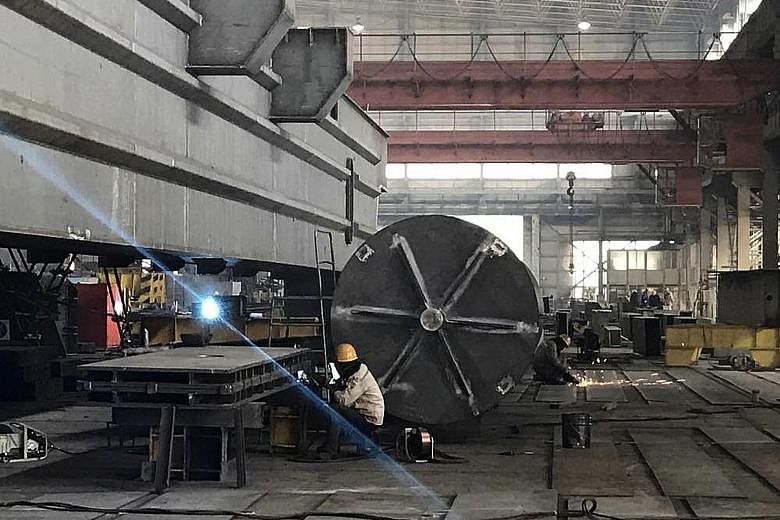Businessmen in China's sluggish north-eastern rust belt are rubbing their hands in glee at the prospect of a windfall from the country's grand plan to revive the Silk Road.
Mr Tian Changjun, chief executive of state-owned Dalian Huarui Heavy Industry Group, believes its products, such as wind turbine parts and cranes for nuclear power stations, will get a boost from the publicity surrounding the project.
Overseas buyers now account for some 35 per cent of total sales; Mr Tian expects this to be more than 50 per cent in the next three years.
The Belt and Road Initiative, also called One Belt, One Road, was unveiled in 2013 to connect China with its neighbours through a sea route via South-east Asia and overland through Central Asia to Europe.
But to seize the opportunities created, Mr Tian knows the quality of made-in-China products must improve. Mr Tian, whose group had a turnover of nine billion yuan (S$1.8 billion) last year, said it was about "getting stronger" and not bigger.
Dalian may be famous for its beaches, but heavy industry firms like Dalian Huarui make up more than 30 per cent of its economy.
The city of about seven million people is banking on the Belt and Road Initiative and its new free trade zone (FTZ) to expand trade and attract investors.
Its home province, Liaoning, saw its economy contract by 2.5 per cent last year - putting it in last place of all 31 Chinese provinces.
The picture is rosier in Dalian, whose economy grew by 6.5 per cent last year. It has been tasked by Beijing to lead the revitalisation of the provincial economy. As a logistics hub in North-east Asia, Dalian will focus on areas such as finance, port logistics and global trade.
Mr Wang Huijun, deputy director-general of Dalian Jinpu New District, said Dalian is linked to some 300 ports through more than 100 shipping routes. It is also connected to Russia by rail.
Said Mr Huang Xintian, deputy director-general of Dalian Customs: "Given our unique geographical location, goods from South-east Asia and the south-eastern part of China can be shipped to Dalian and transported by rail to Russia, eastern and central Europe, and beyond."
This cuts journeys from around 35 days by sea to just 15 days, he told foreign reporters.
Mr Wang said candidly that the FTZ is still at the planning stage and has little to show. To attract foreign investors, he needs "the world to know more about Dalian".
Dalian has also set up a cross-border e-commerce zone, made up of showrooms, warehouses and offices. This has drawn some 1,100 firms, which in all import more than 200,000 types of goods from over 50 countries a year.
"There's (e-commerce giants) Alibaba and JD.com in the south, and we want to create our own e-commerce platform in the north-eastern region," said Mr Kong Yongze, director of the Dalian Jinpu New Area Cross-border E-commerce Comprehensive Pilot Area.
The zone is also cooperating with e-commerce firm eBay to sell Chinese products overseas.
Mr Kong is trying to get local firms to set up industrial parks and warehouses in Fukuoka, Japan, and Gwangyang in South Korea. He led 10 firms from sectors, such as furniture and textile, to Gwangyang last year. He said: "Based on our estimates, the cost of making some products in South Korea could be even cheaper than making them here. In this way, our companies can have their products transformed from being 'made in China' to being 'made in Korea', and get them exported to Europe and other countries."


